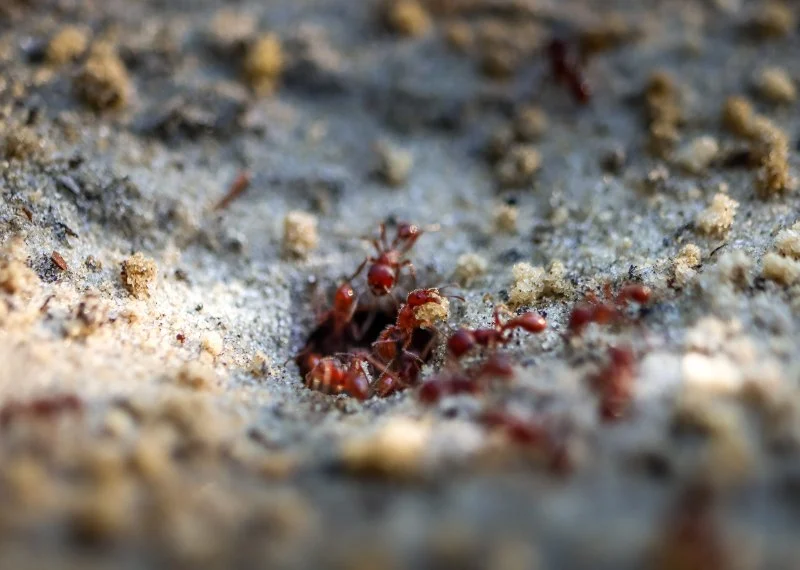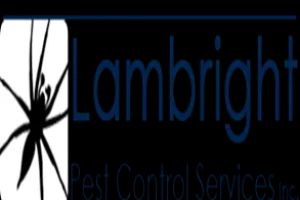
- 1. Understanding Fire Ants: The Basics
- 2. Why Fire Ants Are a Problem in Your Yard
- 3. Effective Methods to Control Fire Ants
- 4. Prevention Tips to Avoid Fire Ant Infestations
- 5. Real-Life Case Study: Controlling Fire Ants Successfully
- 6. Recommended Products for Fire Ant Control
1. Understanding Fire Ants: The Basics
Fire ants are notorious pests known for their aggressive behavior and painful stings. They build large underground mounds that can quickly become a nuisance in your yard. These ants are often attracted to warm climates, making them a common problem in the Southern United States. Their ability to reproduce rapidly and form colonies means that an infestation can grow quickly, posing a significant challenge for homeowners.

Lambright Pest Control Services Inc
Upper MarlboroPrince George's CountyMaryland
14332 Old Marlboro Pike, Upper Marlboro, MD 20772, USA
2. Why Fire Ants Are a Problem in Your Yard
Fire ants can cause various problems in your yard. Not only are their stings painful and potentially dangerous, but their presence can damage lawns, gardens, and even electrical equipment. Fire ants are also highly territorial and aggressive, meaning they can quickly spread throughout your yard if not controlled. Additionally, the nests they create can create hazards for children and pets who unknowingly come into contact with them.
Moreover, fire ants are known to harm local wildlife and can disrupt the balance of your garden ecosystem. Their foraging habits can damage plants and disturb the natural habitat of other beneficial insects.
3. Effective Methods to Control Fire Ants
There are several methods to control fire ants in your yard. Each method has its own benefits, and often a combination of approaches works best for long-term management:
3.1 Bait Treatments
Bait treatments are one of the most effective ways to control fire ants. These baits attract the ants, and when they consume it, they carry it back to the nest. The poison in the bait kills the colony from the inside, including the queen. This method is particularly effective for large infestations.
3.2 Granular Pesticides
Granular pesticides are another popular choice. These can be spread around the yard, and the ants will carry them back to the colony. Granular treatments tend to work faster than baits, though they may require reapplication throughout the year.
3.3 Boiling Water
For smaller fire ant mounds, pouring boiling water directly onto the nest is a quick and natural solution. The heat kills the ants and their larvae. However, this method might need to be repeated to fully eliminate the colony, and care should be taken not to damage surrounding plants or soil.
3.4 Insecticidal Dust
Insecticidal dust can be applied directly to fire ant mounds. This treatment can be very effective, but it requires precise application to ensure that the dust reaches the queen and the rest of the colony.
4. Prevention Tips to Avoid Fire Ant Infestations
Once you've successfully controlled fire ants in your yard, it's essential to take preventative measures to avoid future infestations. Here are some effective tips:
- Maintain a clean yard: Fire ants are attracted to food and moisture. By keeping your yard free of food scraps and minimizing water sources, you can reduce the chances of attracting ants.
- Seal cracks and gaps: Check your home’s foundation for cracks or gaps where ants could enter. Sealing these entry points helps prevent ants from migrating indoors.
- Regularly inspect your yard: Regularly check for signs of new fire ant mounds. Early detection can help you take action before the infestation becomes large.
- Use barriers: Consider using physical barriers like diatomaceous earth around your yard’s perimeter. This will deter ants from entering your space.
5. Real-Life Case Study: Controlling Fire Ants Successfully
A family in Texas experienced a severe fire ant infestation that had overtaken their backyard, with numerous mounds appearing throughout the lawn. After trying multiple store-bought remedies without success, they turned to professional pest control services, which recommended a combination of granular treatments and bait systems. Within weeks, the fire ant population decreased significantly, and the family’s yard was restored to its former state. This case highlights the importance of using the right treatment strategy and, when needed, seeking expert advice to tackle persistent problems.
6. Recommended Products for Fire Ant Control
If you're dealing with fire ants in your yard, here are some of the most effective products that can help you control and eliminate these pests:
- Fire Ant Bait: Effective for long-term control, this bait attracts ants and eliminates the colony from within.
- Granular Ant Killer: Ideal for quick application, this granular product targets large infestations.
- Insecticidal Dust: Use this product for treating specific mounds that require direct application.
- Boiling Water Solutions: If you're looking for an all-natural solution, boiling water can be used on small nests to kill fire ants instantly.
Visit PestControlHub to find more products and expert recommendations for your fire ant control needs. Whether you're dealing with a minor infestation or a larger problem, we have the right solution for you.








 Wildlife Resolutions4.0 (443 reviews)
Wildlife Resolutions4.0 (443 reviews) Pest Marshals of Toledo5.0 (2 reviews)
Pest Marshals of Toledo5.0 (2 reviews) LS Rodent Proofing & Pest Control Service5.0 (4 reviews)
LS Rodent Proofing & Pest Control Service5.0 (4 reviews) Best Termite & Pest Control4.0 (16 reviews)
Best Termite & Pest Control4.0 (16 reviews) Varment Guard Wildlife Services5.0 (28 reviews)
Varment Guard Wildlife Services5.0 (28 reviews) Pestban Inc4.0 (394 reviews)
Pestban Inc4.0 (394 reviews) How to Use Monitors to Detect Pest Entry: A Comprehensive Guide
How to Use Monitors to Detect Pest Entry: A Comprehensive Guide How to Predict Which Pests Will Invade Next – Smart Pest Forecasting for the U.S.
How to Predict Which Pests Will Invade Next – Smart Pest Forecasting for the U.S. How to Conduct a Pest Risk Assessment at Home – Expert Guide
How to Conduct a Pest Risk Assessment at Home – Expert Guide How to Block Pest Entry Around Deck Joists: Effective Solutions
How to Block Pest Entry Around Deck Joists: Effective Solutions How to Safely Use Fumigation Methods: A Comprehensive Guide for Homeowners
How to Safely Use Fumigation Methods: A Comprehensive Guide for Homeowners Why Pests Are More Active After Rain: Understanding the Link Between Weather and Pest Behavior
Why Pests Are More Active After Rain: Understanding the Link Between Weather and Pest Behavior